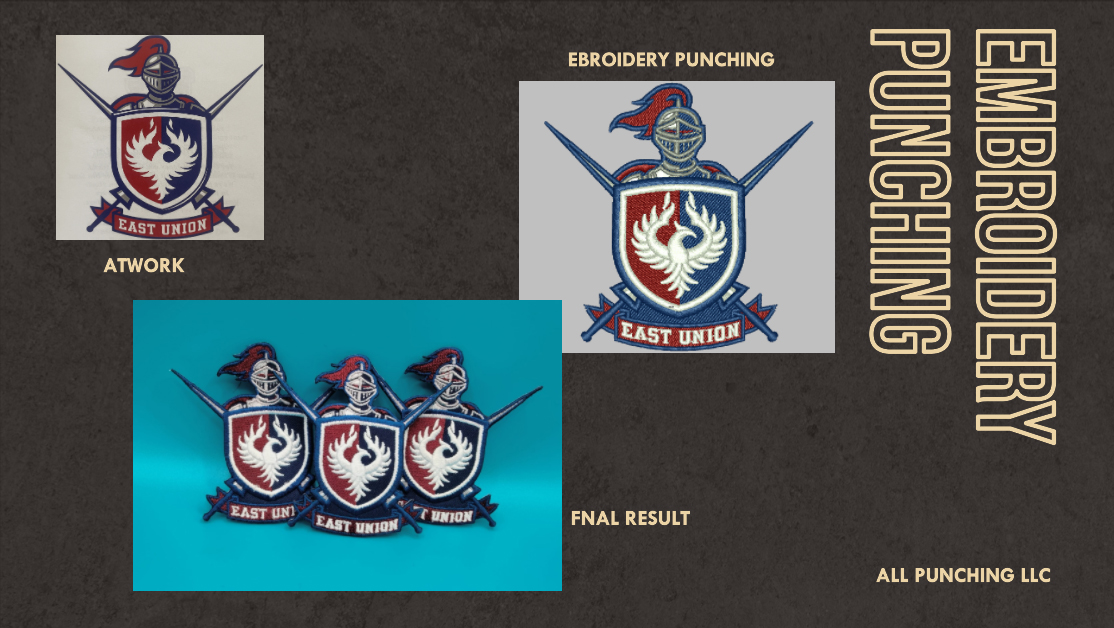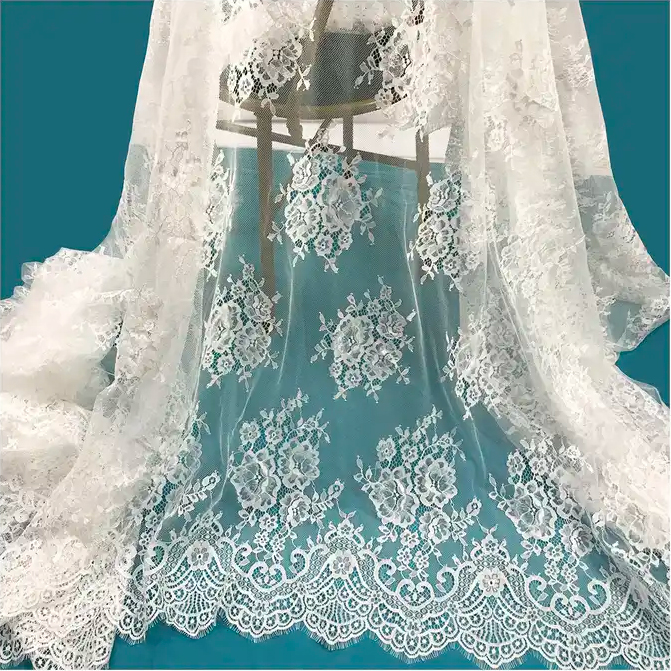
What is Embroidery Punching?
Embroidery Punching: Unraveling the Art of Creating Intricate Designs
Embroidery is a time-honored craft that has been cherished for centuries, evolving from simple embellishments to complex works of art. One of the techniques that has played a significant role in this transformation is embroidery punching, often referred to as digitizing.
In this blog, we will delve into the world of embroidery punching, exploring what it is, how it works, and its significance in the realm of embroidery.
Understanding Embroidery Punching?
Embroidery punching is a process in which intricate designs and patterns are translated into a format that can be read and interpreted by computerized embroidery machines. The process involves converting a visual design or artwork into a digital embroidery file, which contains the instructions for the machine to create the desired pattern. Essentially, embroidery punching bridges the gap between the creativity of the designer and the precision of modern embroidery technology.
The Role of Embroidery Digitizing Software
Embroidery digitizing software plays a crucial role in the embroidery punching process. This software allows the designer to input the design and manipulate it to ensure that it will translate well into embroidery. Key features of embroidery digitizing software include:
1. Design Input:
You can import your design in various formats, such as JPEG, PNG, or even vector files like SVG. The software allows for fine-tuning, resizing, and positioning the design as needed.
2. Stitch Types:
You can select the type of stitches that the machine will use to recreate your design, including satin stitches, fill stitches, and more. Each type offers different textures and appearances.
3. Color Management:
The software helps in assigning colors to different elements of the design, which is important for creating multi-colored patterns.

4. Stitch Density:
Controlling the stitch density is essential for achieving the desired level of detail and texture in the embroidery.
5. Editing Tools:
The software provides tools for cleaning up the design, removing unwanted elements, and ensuring that the final result will be of high quality.
6. Simulations:
Some software offers simulation features, allowing you to preview how the design will look when embroidered.
Once the design has been fine-tuned and customized using digitizing software, it is ready for the embroidery punching process.
The Embroidery Punching Process
The embroidery punching process begins by exporting the design as an embroidery file format, which is typically in a format like DST, PES, or EXP. These file formats contain information about the design, such as stitch type, color changes, and the order in which the machine should execute the stitches.
The next step is to transfer the embroidery file to the embroidery machine. Modern embroidery machines are equipped with digital interfaces that can read and interpret these files. When the machine receives the file, it begins to embroider the design according to the instructions contained within it.
The machine utilizes a needle and thread to follow the path outlined by the digital file. It punctures the fabric, stitching layer by layer until the entire design is complete. The result is a meticulously embroidered pattern that mirrors the original design, down to the finest details.
The Significance of Embroidery Punching
Embroidery punching has revolutionized the world of embroidery in several significant ways:
1. Precision and Consistency:
Embroidery punching ensures that every stitch is placed with exact precision. This level of consistency is challenging to achieve through traditional hand embroidery.
2. Complexity:
Digitizing allows for the creation of intricate and detailed designs that would be difficult, if not impossible, to replicate by hand.
3. Efficiency:
With embroidery punching, designs can be created and embroidered quickly and efficiently. This is particularly important for commercial embroidery businesses that need to produce large quantities of embroidered items.
4. Replication:
Once a design is digitized, it can be easily replicated across various items, ensuring uniformity in branding or personalization.
5. Versatility:
Embroidery punching can be used on a wide range of fabrics, from delicate silks to heavy denim, making it a versatile choice for a variety of applications.
6. Customization:
Designers have the flexibility to create custom embroidery patterns, catering to the unique needs and preferences of their clients.
Applications of Embroidery Punching
Embroidery punching is used in various industries and for a multitude of purposes. Here are some common applications:
1. Fashion
The fashion industry relies heavily on embroidery punching to create intricate designs on clothing and accessories. From designer dresses to customized sneakers, embroidery adds a touch of elegance and personalization.

2. Corporate Branding
Businesses use embroidered logos and emblems on uniforms, merchandise, cap design, jacket back design, left chest embroidery digitizing and promotional materials to create a professional and branded image. Embroidery punching ensures that these logos are consistent and recognizable.
3. Home Decor
Embroidery punching is used to create decorative elements on items like cushions, curtains, and linens. This allows homeowners to add a unique and personal touch to their living spaces.
4. Sports and Team Gear
Sports teams, both amateur and professional, often use embroidered logos and names on uniforms and team gear. This not only represents team unity but also showcases team pride.
5. Personalization
Embroidery is frequently used for personalization purposes, such as monogramming initials on towels, embroidering names on baby blankets, or crafting unique gifts for special occasions.
6. Art and Craft
Embroidery artists and craft enthusiasts employ embroidery punching to create intricate and artistic designs, turning fabric into a canvas for their creativity.
The Role of Embroidery Punchers
Professionals who specialize in embroidery punching are known as "embroidery punchers" or "digitizers." These skilled individuals play a pivotal role in ensuring the quality and success of the final embroidered product. Their responsibilities include:
1. Design Assessment:
Analyzing the original design and determining its suitability for embroidery.
2. Digitizing:
Converting the design into an embroidery file format, adjusting stitch types, density, and other parameters for optimal results.
3. Color Management:
Assigning the correct thread colors to different elements of the design.
4. Quality Control:
Ensuring that the digitized design will translate into a high-quality embroidered product.
5. Machine Compatibility:
Understanding the capabilities and limitations of different embroidery machines to optimize the design accordingly.
6. Troubleshooting:
Addressing any issues that may arise during the embroidery process, such as thread breaks or alignment problems.
Embroidery punchers are an essential part of the embroidery industry, and their expertise is valued by both businesses and individuals seeking high-quality embroidery services.
Benefits Of Embroidery Punching:
Embroidery punching, also known as digitizing, offers a wide range of benefits that make it an indispensable technique in the world of embroidery. These benefits apply to both commercial and personal embroidery projects. Here are some of the key advantages of embroidery punching:
1. Precision and Consistency:
Embroidery punching ensures that every stitch is placed with exact precision. This level of consistency is challenging to achieve through traditional hand embroidery. As a result, the final embroidered product is uniform and of high quality.
2. Complexity and Intricacy:
Embroidery punching allows for the creation of intricate and highly detailed designs. This is particularly important for intricate logos, emblems, and designs that would be difficult, if not impossible, to replicate by hand.
3. Efficiency and Speed:
With embroidery punching, designs can be created and embroidered quickly and efficiently. This is especially beneficial for commercial embroidery businesses that need to produce large quantities of embroidered items within tight deadlines.
4. Replication:
Once a design is digitized, it can be easily replicated across various items and fabrics. This ensures uniformity in branding or personalization, making it an ideal choice for businesses and individuals looking to maintain a consistent image.
5. Versatility:
Embroidery punching can be used on a wide range of fabrics, from delicate silks to heavy denim. It adapts to different materials, making it a versatile choice for a variety of applications.
6. Customization:
Designers and individuals have the flexibility to create custom embroidery patterns. This allows them to cater to the unique needs and preferences of their clients, making it a valuable tool for personalization.
7. Durability:
Embroidery punching creates durable and long-lasting designs. The embroidered patterns withstand washing, wear, and tear, making them suitable for items that need to maintain their appearance over time.
8. Professional Appearance:
Embroidery adds a professional and polished appearance to various items. This is why it is widely used in corporate branding, team uniforms, and high-end fashion.
9. Color Variety:
Embroidery punching offers a wide range of thread colors, allowing for vibrant and eye-catching designs. This is crucial when it comes to branding or creating visually appealing patterns.
10. No Fading or Cracking:
Unlike some printing methods, embroidered designs do not fade or crack over time, ensuring that the quality and appearance remain intact.
11. Texture and Dimension:
Embroidery creates a unique texture and three-dimensional effect that adds depth and visual interest to designs. This is particularly valuable for intricate logos and detailed artwork.
12. Longevity of Designs:
Once a design is digitized, it can be archived and reused in the future. This makes it easy to reorder or make modifications to existing designs, saving time and effort.
13. Artistic Expression:
Embroidery punching is a creative outlet that allows artists and designers to express their creativity on fabric. It is a means of turning fabric into a canvas for artistic expression.
14. Personalization:
Embroidery is an excellent way to personalize items, such as monogramming initials, embroidering names, or adding special messages. It is a thoughtful and cherished way to make gifts unique and memorable.
The Future of Embroidery Punching
As technology continues to advance, the world of embroidery punching is also evolving. Some of the trends and developments in this field include:
1. Automation:
The automation of certain aspects of the digitizing process, such as AI-driven design conversion, is becoming more prevalent. This can streamline the digitizing process and reduce the margin of error.
2. Augmented Reality (AR):
AR applications are being developed to allow designers to visualize how an embroidery design will look on a real-world object before it's embroidered. This helps in making design choices and improving accuracy.
3. Sustainability:
With an increasing focus on sustainability, there is a growing interest in eco-friendly embroidery materials and practices. Digitizing can contribute to reducing waste and using resources more efficiently.

0 Comments